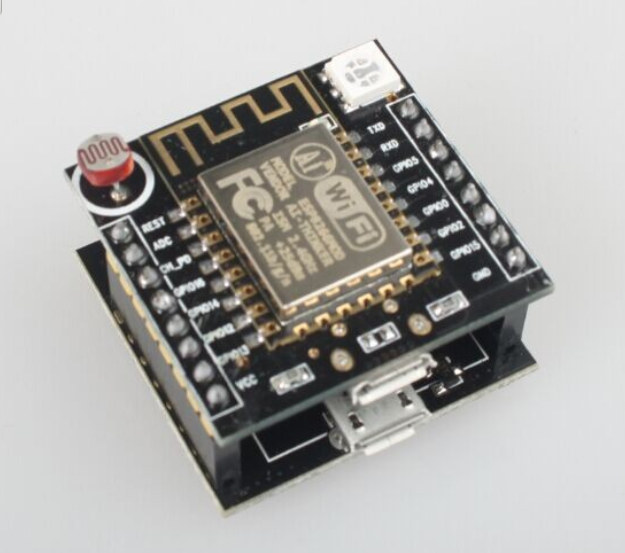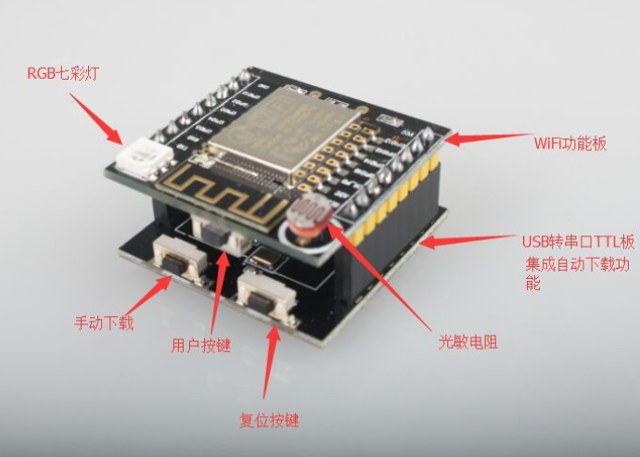In case you need a cheap and compact ESP8266 board with integrated USB to TTL debug interface, a photo resistor, and/or some buttons, a white brand board based on ESP-12F could be interesting.
 “Witty cloud” development board specifications:
“Witty cloud” development board specifications:
- ESP-12F module with Espressif ESP8266EX SoC
- Connectivity – WiFi 802.11 b/g/n
- 2x 8-pin headers with GPIOs, VCC, GND, Reset, ADC, and UART
- USB – 2x micro USB port (one for power, one for debugging ?)
- Misc – Photo resistor, RGB LED, three buttons for power, reset and firmware upgrade (I think)
- Dimensions – Small
 Witty cloud might not be the same of the board itself, but could be a cloud service launched in China, as some of the screenshot on Aliexpress could imply. All I could find are some websites vaguely mentioning GoKit 3.0 and Witty Cloud 3.0, but it does not make much sense. If Chinese readers could provide some insights here it would be nice.
Witty cloud might not be the same of the board itself, but could be a cloud service launched in China, as some of the screenshot on Aliexpress could imply. All I could find are some websites vaguely mentioning GoKit 3.0 and Witty Cloud 3.0, but it does not make much sense. If Chinese readers could provide some insights here it would be nice.
The board sells for as low as $3 + shipping on Aliexpress, which amounts to $4.85 in total in my case.
Via Pete Scargill

Jean-Luc started CNX Software in 2010 as a part-time endeavor, before quitting his job as a software engineering manager, and starting to write daily news, and reviews full time later in 2011.
Support CNX Software! Donate via cryptocurrencies, become a Patron on Patreon, or purchase goods on Amazon or Aliexpress





